
The Jaguar XJ6 set the motoring world afire when introduced in late 1968, and was considered the most beautiful sedan at the time. It deserved it. The styling would go through three different series on the original body, and two subsequent redesigns going all the way to 2008. The XJ6 was a survivor. It outlasted British Leyland, the Ford buyout and lives on today with a totally different design language that was finally introduced in 2009 after 40 years of refining and adapting the original 1968 shape. While to this day, I still prefer the classic shape, the “new” design, now approaching 15 years in production, does appear suitably elegant. Just the other day I saw one in black in traffic, and it looks pretty good. Well, at least until they kill it and go all-combover-schlock, all the time, like Lincoln. But I digress!
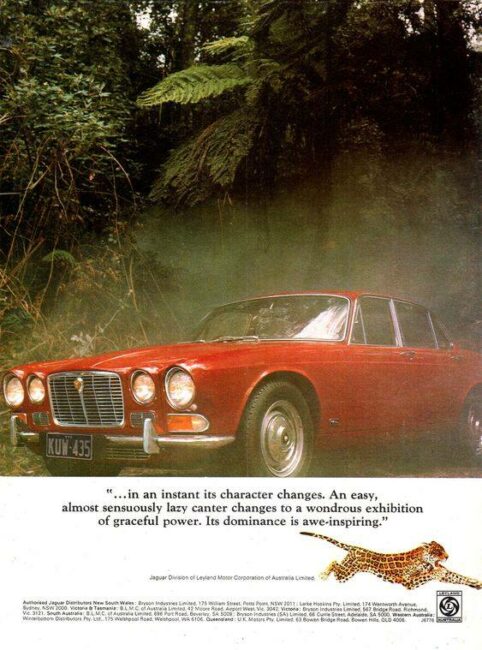
The XJ6 was introduced in September of 1968 and used 2.8L and 4.2L versions of Jaguar’s long-lived and famous “XK” inline six cylinder, dual overhead camshaft engine with dual Zenith-Stromberg carburetors. The suspension consisted of coil springs up front with anti-dive geometry and anti-roll bar, and fully independent suspension in the back, again with coil springs and damper units.
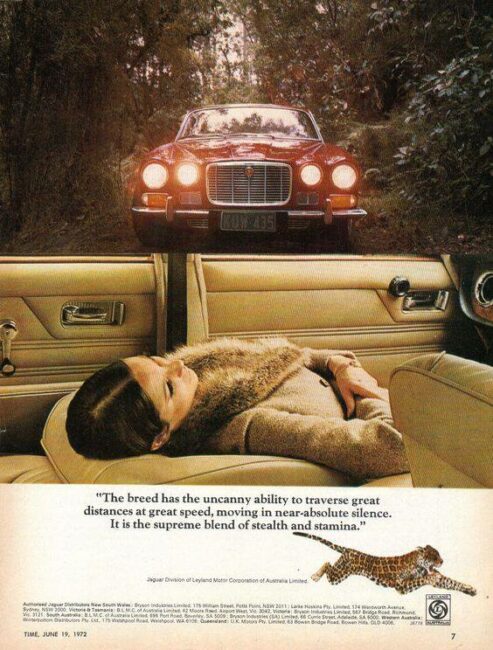
Power four-wheel disc brakes with separate front and rear circuits were also included. An interesting feature that carried over from previous Jaguars were twin 12-gallon fuel tanks (with twin SU fuel pumps).
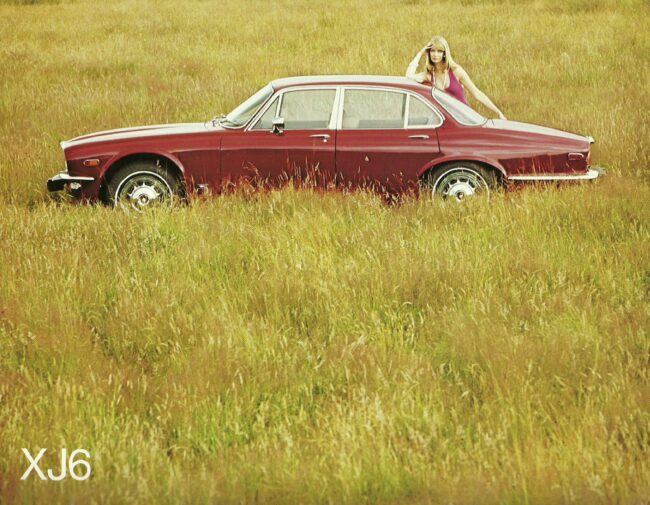
British markets received upmarket versions badged as Daimler Sovereigns. Performance was very good for a big sedan, with automatic-equipped 4.2s having a 0-60 time of 10.1 seconds. Although rare then and probably in hens’ tooth scarcity in 2023, XJ6s with the manual were even better at 8.8 seconds.
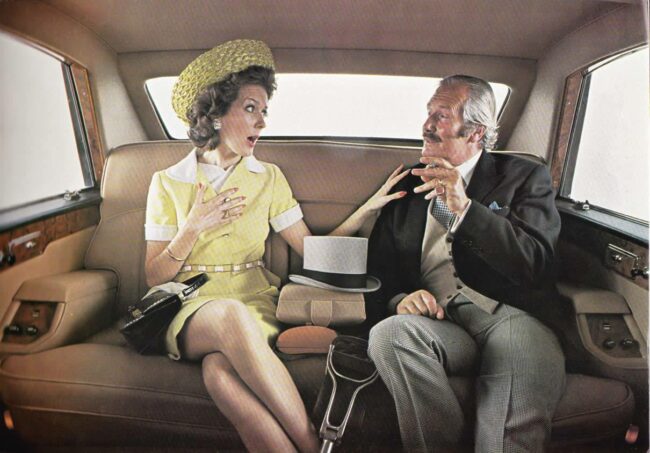
This was a driver’s sedan, not something to be chauffeured about in. That’s what the Daimler DS420 was for. Smithers, another gin rickey!
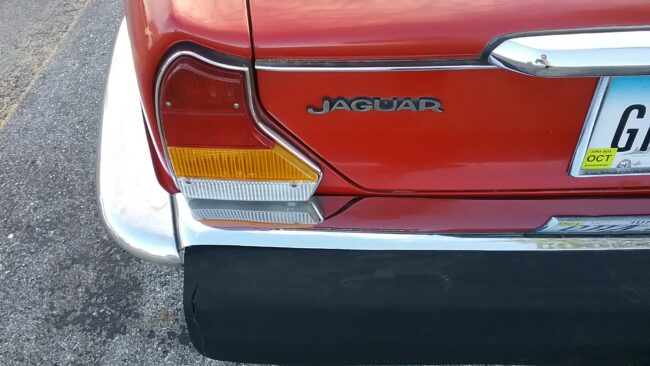
The original XJ6 was built from 1968 to late 1973. Other than the famous Mark I and Mark II sedans of the 1950s and early 1960s, it was quite a departure from the reserved styling and so-veddy-bloody-proper British image that the Mark VIII, IX and X sedans had projected. This was more like a four-door E-Type.

It effectively replaced most of Jaguar’s sedan range, including the Mark II and 420. Only the aforementioned Mark X and 420G lasted into the 1969 model year. A long-wheelbase XJ6L came out in 1972, adding an extra 4 inches of stretch-out rear seat room to the regular XJ6’s 108.8-inch wheelbase.
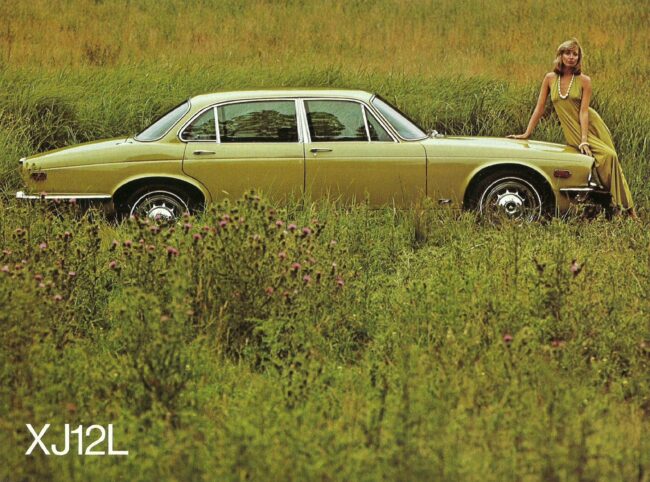
The Series II XJ6 came out in late 1973. All XJ6s received a new, taller front bumper (to comply with US bumper height regulations) and a shorter grille. Inside, there was a new instrument panel. Auxiliary gauges moved from the center of the panel and now framed the speedometer and tachometer for better visibility. By this time, the 4.2 was producing 170 hp @ 4500 rpm. While manual transmissions were still available from the factory, all US-bound XJ6s had the three-speed Borg-Warner automatic.
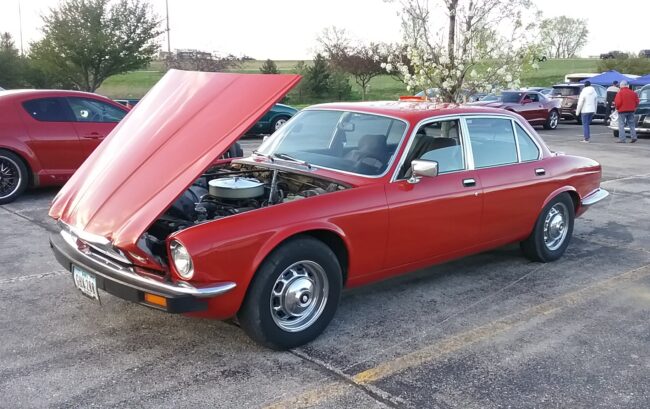
1974 North American XJ6s sported Dunlop E70VR15 SP Sport whitewall tires. Whitewalls on a Jaguar may sound odd, but in the ’70s it was not uncommon for Mercedes-Benzes and Volvos to be sporting them, in the US at least. Overall length was slightly longer at 194.8 inches, due to the new rubber bumperettes added to satisfy new Federal bumper standards. The 108.8″ wheelbase remained the same.
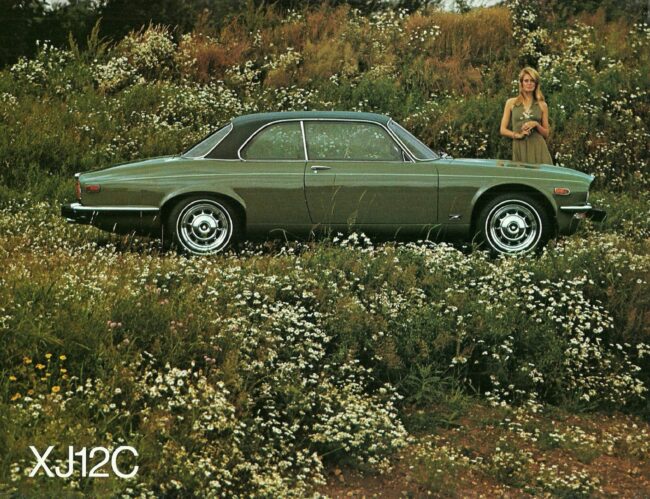
A beautiful two-door hardtop version of the XJ6 was introduced in 1973, but actual production was delayed for a while due to weatherstripping issues on the pillarless body. Sadly they were only available for a few years, as management felt the 2+2 XJ-S covered that segment of the market more successfully. Fuel injection replaced carburetors in mid-1978, with a Lucas-Bosch L-Jetronic unit. Series IIs continued until early 1979, when a much more substantial refresh of the 1968 body replaced it.
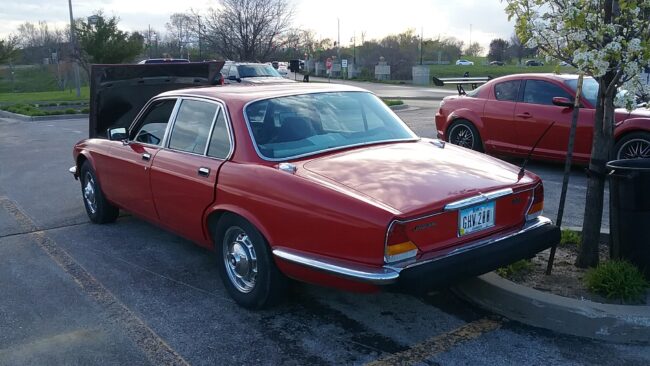
The Series III may have looked very similar at first glance, but closer inspection revealed a number of changes. The restyling was handled by Pininfarina and included a smaller vertical-bar grille, taller roofline with increased glass area, flush door handles and larger black bumpers with built-in turn signals. Roof pillars had a bit more rake, and the roof panel itself was flatter than before.
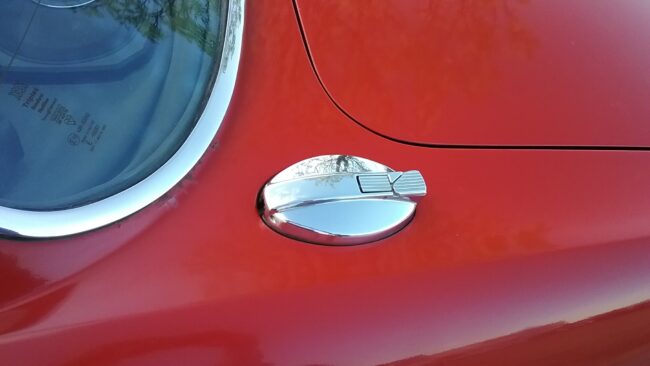
This particular Series III appears to have late Series II bumpers and chrome wheels, as the Series IIIs had revised Rostyle or GKN alloys and black wraparound composite bumpers with chrome trim on top. Or maybe it’s a real early Series III? I’m not as conversant on these as I am on, say, 1970’s Sedan de Villes, ha ha.
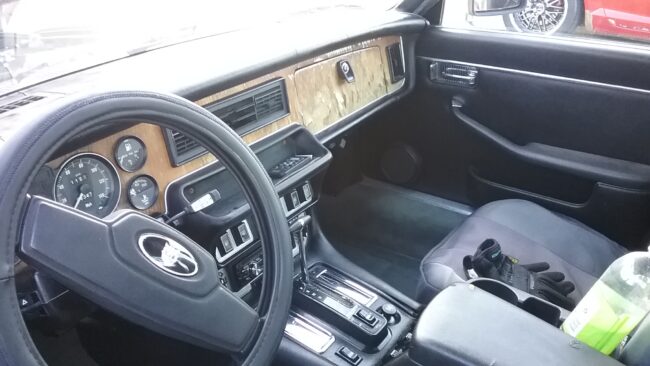
Series III XJ6s continued with only minor changes until 1987, when the long-in-coming XJ40 finally replaced it in 1988. A Series III XJ12, never imported to the United States, lasted even longer, with production lasting into 1992. The XJ40 version of the XJ6 (a story for another time) lost a lot of the classic Jaguar styling cues, and a 1995 revamp brought back much of the Series III’s character, including the tunneled hoodline with circular quad headlights.
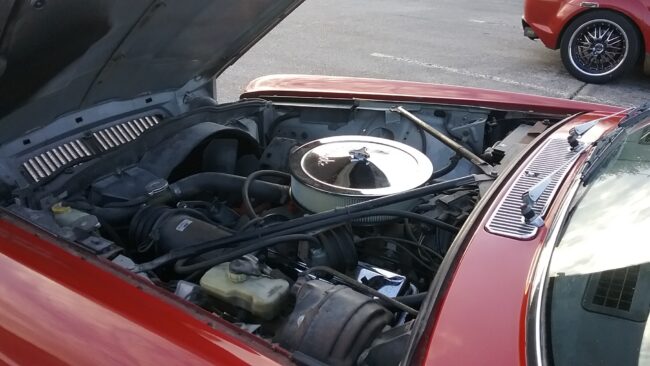
This one was spotted in April 2019 at one of the monthly cruise nights at Coral Ridge Mall in Coralville, IA. It looked to be in pretty nice shape, and it’s always a pleasure to see something different from the late-model Camaros, Corvettes and Mustangs that you typically see at events like these! Though this one did have the somewhat common 350 Chevy heart transplant!
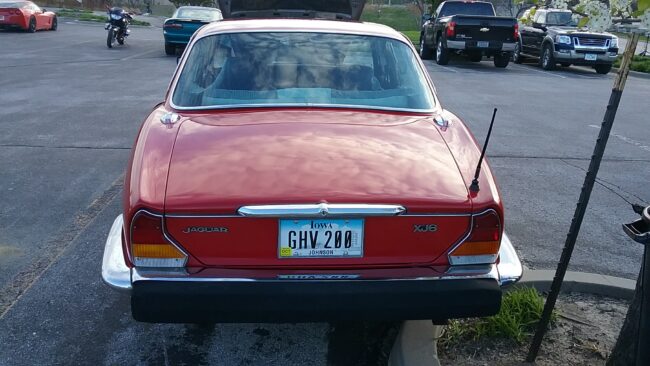







8 Comments
Is this perhaps, owing to the early optimism given PM Thatcher, the ultimate statement of British superiority? For those mainland Euro fans, compare here the contemporary 604 and Alfa 6. The issue is of course that Edwardes period gradual sell out was embarrassing compared to Lord Stokes period innovation despite no budget.
Speaking of sell out versus innovation, I currently have a Jaguar XF sedan on order. They recently told me it would be a 2024 instead of 2023. in BRG, my guess my last car before mobility becomes a phone app. I can live with that.
Tom, that was a great write up. I have fond memories of seeing XJs on the road. Absolutely beautiful cars. Many thanks.
I can’t think of a prettier sedan than that XJ6. Lovely find, and great writeup!
My brother had a series II. Ended up doing a SBC swap.
John congratulations on finely ordering a car as dealer inventory is still a challenge except for the Range Rover dealers whom seem to have a 160 day supply. Question did you go for the bright trim exterior package and the even offer red or saddle interior as well as the universal black… I thought it was unusual that you could specify headliner color and material but I do not live in that $60,000 plus sedan market. Again congrats for gettin in game….
Thanks Lynn! After my wife ruled out the CT5 after a bad experience with the local dealer, I checked the Jag?LR dealer and they had gotten in two! XFs, both black inside and out with the blacked out wheels and chrome. Not for me but close enough to test drive as I hadn’t been in this generation XF. Nothing disqualifying so I placed the order in March. My spec is a basic S in British Racing Green outside with a Caraway,(tan) leather, and oyster headlining. This list price of the car is $48,875 though that will probably go up with it now going to be a 2024. It does have a little of the open pored modern wood that they call engineered. My last Jaguar, an 07 indigo XJ8 had high gloss walnut and lots of it.
The price is quite a value as per Jaguar tradition. My first Jaguar, a 2000 sapphire 3.0 S type listed at $44,995(80,800 adjusted). That was the beginning of the midsize line built at Castle Bromwich and my XF will be near the last. The XF has 7 more horsepower, three more gears and thanks to fewer cylinders and an aluminum body, the two cars have the same weight. Not many moderns weigh the same as ancestors. Not sure if they were making a ton on the 2000 or loosing a ton on the 2023. Maybe a less sound pound?
John great color combination, all British cars should be green/tan :-). A long time ago I got a small inheritance and I had a chance to buy a left over new 75 XKE-V12 for $6,500 off the lot but it was Yellow and had those ugly rubber bumper guards. Got a new Trans Am and had enough left over for an academic year of living expenses. Guess it was a good decision as I could have never keep that V12 running and I was in grad school with not a garage…. 🙂 again congratulations on the new car we look forward to your review once delivered….
You were probably correct choosing a Trans Am over the XKE at the young age. The way wealth ebbs and only occasionally flows, later in life, a Trans Am will remain a fond youthful memory. An XKE, years later after hard work you find yourself in something cheap and cheerful. Man I once had a new XKE, now this, what the heck happened to me?